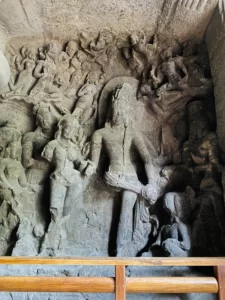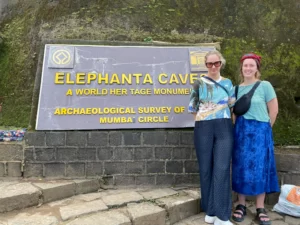Amidst the Arabian Sea lies an island home to the ancient Elephanta caves. The caves are a marvel that displays the tales of Lord Shiva and offer a symphony of sculptures where the magic of faith and art combine.
Elephanta Caves Mumbai is a sight to behold, taking you to the ancient Indian civilization. Visiting the Elephanta caves is an experience like no other. They are a remarkable example of rock-cut architecture commonly seen in ancient Indian civilizations.
In this blog, we will explore the history of Elephanta caves in Mumbai, their significance, and the facts about them. Take a one-day Mumbai tour package and indulge in the cultural significance of the caves and witness the beauty of the intricate carvings and sculptures of the Mumbai Elephanta caves. We’ll also explore the events that have influenced the development and preservation of the Elephanta caves in Mumbai.
Let’s uncover the fascinating history, facts, and cultural significance of the caves before you take an Elephanta Caves Mumbai group tour or an Elephanta Caves private tour.
History of Elephanta Caves

Location and Structure:
The Elephanta Caves form a collection of rock-cut temples on Elephanta Island in Mumbai.
These caves are believed to have been chiseled out of solid rock from the 6th to 8th centuries AD, during the rule of the Chanakya dynasty.
Construction Techniques:
Archaeologists believe the excavation was likely done with chisels and hammers.
The intricate sculptures and carvings within the caves were crafted using various methods, including carving and sculpting.
Magnificent Cave 1:
The largest and most splendid cave, Cave 1, features a spacious hall supported by rows of pillars.
Elaborate carvings on the walls depict events from Hindu mythology, showcasing figures like Lord Shiva, Parvati, and other deities.
Portuguese Arrival in the 16th Century:
In the early 16th century, the Portuguese arrived in the Mumbai area and gained control in 1534.
While there’s no evidence of their authority over Mumbai Elephanta Island or the caves, they likely encountered them during explorations.
Origin of the Name “Elephanta”:
The Portuguese term “Ilha da Elefanta,” meaning “Island of Elephants,” is believed to be the origin of the name “Elephanta.”
Settlers named the caves after seeing a stone elephant near the coast.
Neglect and Rediscovery:
Over time, the Mumbai Elephanta Caves fell into neglect, becoming a pilgrimage site for locals.
Rediscovery occurred in the 19th century when the British initiated rehabilitation efforts, opening the caves to the public.
Now that you know about the Elephanta Caves history, there are some unheard and fascinating facts about Elephanta Caves Mumbai your Mumbai tour guide will inform about:
Secret Chambers:
Deep within Elephanta Caves in Mumbai, there are rumoured secret chambers that have yet to be fully explored. Speculation surrounds their purpose and contents, adding an air of mystery to the site.
Unknown Builders:
Despite extensive research, the original builders of Elephanta Caves still need to be discovered. The identity of the artisans who carved these magnificent structures into solid rock is a historical enigma.
Ancient Construction Techniques:
The methods used to carve out Elephanta Caves in Mumbai from solid rock in the 6th to 8th centuries AD have yet to be fully understood. The intricate carvings and sculptures suggest a level of craftsmanship that raises questions about the tools and techniques employed.
Multilayered History:
The caves witnessed multiple cultural influences over the centuries, from ancient Indian dynasties to the Portuguese in the 16th century. Elephanta Caves’ history contributes to the complex and fascinating narrative of Elephanta Caves.
Unexplored Carvings:
While many carvings within the caves depict Hindu mythological events, some sections still need to be explored. These lesser-known carvings may hold untold stories and symbolism waiting to be deciphered.
Magnetic Stone Elephant:
An intriguing feature near Elephanta Island is a magnetic stone elephant. The stone’s magnetic properties add a unique dimension to the site, attracting curiosity about its geological significance.
Hidden Temples:
There are hints and speculations about hidden or lost temples around Elephanta Island. These potential archaeological gems contribute to the fascination surrounding the site.
Submerged Structures:
Some theories suggest that submerged structures might exist around Elephanta Island. The possibility of undiscovered underwater archaeological remnants adds an adventurous aspect to the site’s exploration.
Cultural Time Capsule:
Elephanta Caves serve as a cultural time capsule, reflecting not only ancient Indian art and religion but also interactions with external cultures. This makes it a unique and dynamic historical site to visit on an Elephanta Caves group tour.
Elephanta Caves Photos
Check out the beauty of Elephanta Caves in these pictures, and book your Elephanta Caves Tour for your next visit to Mumbai.






